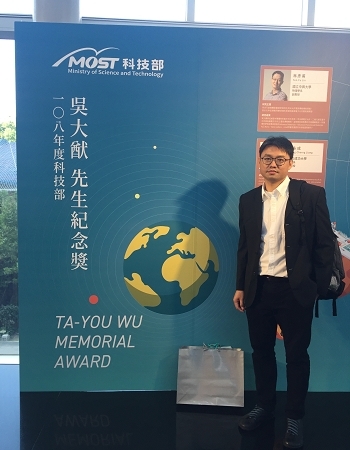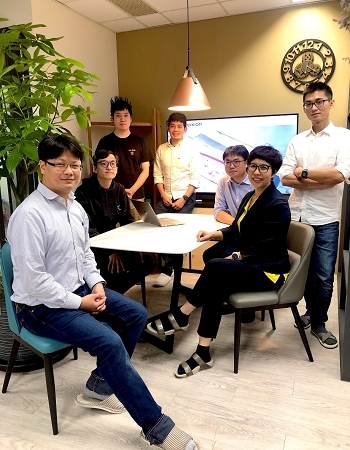The technical team of Professor Meng-Tsan Tsai of the University established a start-up company and won the "18th National Innovation Award"
Office of Technology Development and Industry Liaison
Professor Meng-Tsan Tsai of the Department of Electrical Engineering and Associate Professor Hsiang-Chieh Lee of the Graduate Institute of Photonics and Optoelectronics of National Taiwan University are committed to the development of optical imaging technology. The results of their application of optical coherence tomography (OCT) to the skin clinical research have been published in top-tier international journals. They demonstrated that this technology can solve clinical skin problems. In July 2020, they received an early-stage grant from the Ministry of Science and Technology under the Industrial Value Creation Program for them to develop the "portable multi-functional 3D skin light detector". They successfully completed the 3D skin scanning machine, and then won the Ministry of Science and Technology's sponsorship under the six-month scientific research and entrepreneurship program to continue the commercialization of their medical device. During the implementation of the entrepreneurship program, they mainly engaged in the 3D skin optical scanner trial production, safety certification, FDA 513g classification consulting (U.S. Food and Drug Administration medical materials, non-medical materials determination consulting), TFDA (Taiwan Food and Drug Administration Class II Medical Materials Licensing Application) and FDA (US Food and Drug Administration Class II Medical Materials Licensing). The team was approved by the US FDA on May 28, 2021 to sell this skin product in the U.S. market under the non-medical-device category. After the team completed the development of the machine at the end of last year, Dr. Chau-Yee Ng from the Department of Dermatology of Chang Gung Memorial Hospital assisted in carrying out clinical trials at Chang Gung Memorial Hospital and Chang Gung Clinic.
This device can provide real-time 3D skin structure images and resolution up to micron levels while obtaining skin microvascular distribution images. Furthermore, it can be used to observe the skin lesions caused by subcutaneous microstructure changes, so as to assist physicians in diagnosis. It is small in size, and it also has characteristics such as being portable and multi-functional. In addition to obtaining the three-dimensional structure of the skin, this instrument can also provide quantified data according to the scanning image to calculate a variety of skin parameters, including horn thickness, epidermis thickness, microvascular density, epidermis roughness, skin roughness, etc. This instrument can be used in skin medical clinics in the future or applied to fields related to aesthetic medicine, cosmetic shops (counters), beauty care shops, and multi-level marketing.
 Professor Meng-Tsan Tsai of the Department of Electrical Engineering of Chang Gung University |
 The research and development team of the start-up company (from the left to right, Associate Professor Hsiang-Chieh Lee of the Graduate Institute of Photonics and Optoelectronics of National Taiwan University, Bo-Xu Soo, Ming-Feng Wu, Shao-Hua Huang of the OpXion Tech. Incorporation, Professor Meng-Tsan Tsai of Chang Gung University, Executive Director Long-Ping Zhou of the OpXion Tech. Incorporation, and Feng-Yu Zhang, director of research and development of the OpXion Tech. Incorporation) |
 A portable multi-functional 3D skin light detector |
|